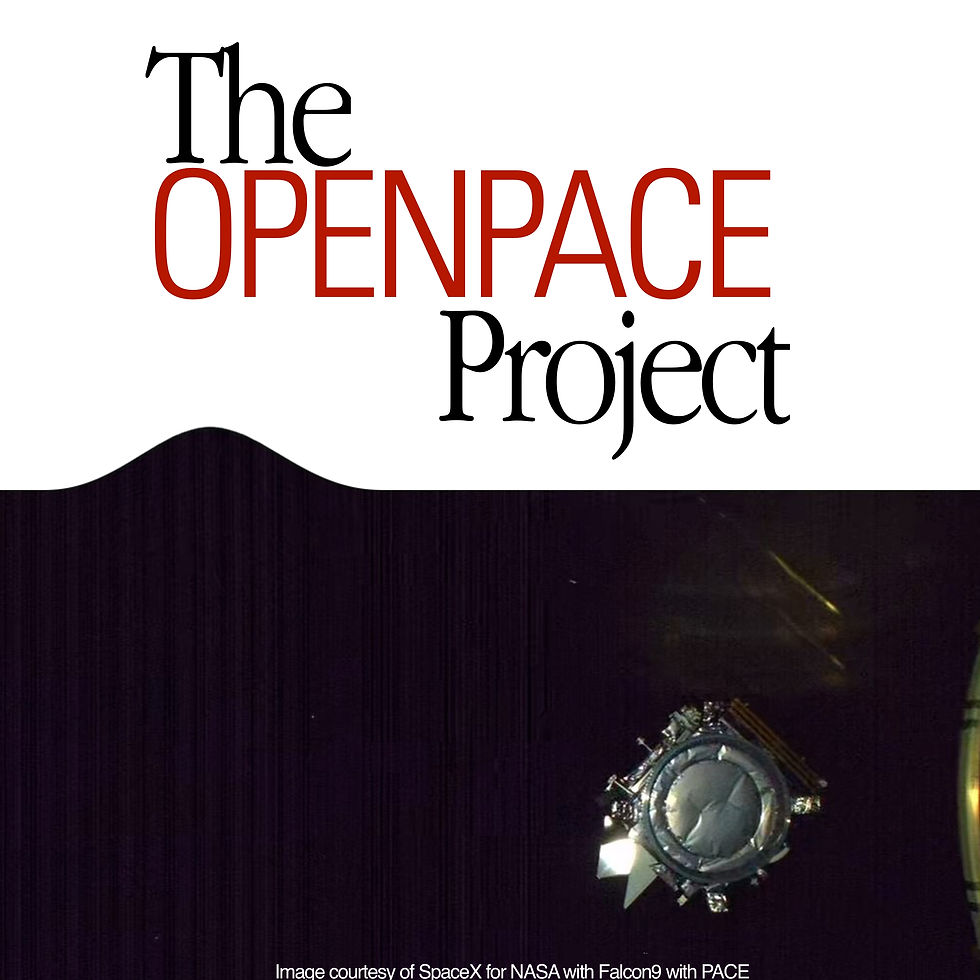by: Rajat Nayak

If you have finished high school and didn't skip your Physics classes, you might remember that light by nature can behave simultaneously as a wave and a discrete particle. A good experiment that had determined the proof of the former was what was known as the Young's Double Slit Experiment. To read up more on what is to serve as a primer for this discussion, one might want to read up this excellent post from PhotonTerrace.
Firstly, one might ask why the wavelength of light is relevant at all when talking about PACE. The reasoning is simple. The entirety of data collected by the PACE's primary sensor, the OCI will (to quote OceanColor) "measure the radiance, or flux of light emitted, from the top of the atmosphere. The exceptionally broad range of wavelengths sensed by the OCI – from ultraviolet to near-infrared along with several shortwave infrared bands – will support investigation of the ocean, atmosphere, and key climate-related factors."
But...well, what the hell is a wavelength? Well, since we established light can often prefer to behave as a wave, it might be convenient to assign wave properties and define something like...this.
This image, credit to the ColorLiteracyProject, who also have an excellent article on this topic here.
So now we define the highs and lows of the waveform structure- as, quite simply put, crests and troughs respectively. And now we simply state the wavelength as a function of the same, as the distance between two consecutive crests, or troughs.
More elegantly put, a wave is a second order partial differential equation of the form
Sound familiar? No? Well, the phi 'ϕ', assigns a wave function, and represents local displacements- harmonic or not, from a mean value. A valid solution to this function is in the form of this:
Where omega 'ω' is the product of k and c, and is called the wave frequency.
Since such a solution is linear one might do superpositioning of any given light waves, and have it be fine. The linear combination of solutions thus present another further solution.
But what if the wave frequency is not the same? In that case one must use what is called the Fourier Decomposition. That is a rather advanced topic we do obviously advice to look up.
The Light that We See
The light that we see is a combination of various light points at various frequencies. Turns out for the 'white' visible range of light, there may be a combination distinct spectra of light, and they are:
(top one is Violet, and for all of them, the wavelength is represented in Angstrom and nanometres, which is 10^(-10) meters, and 10^(-9) meters respectively.)
Wavelength and frequency are inversely proportional to each other, Red Spectra has highest wavelength, and lowest frequency among the bunch in the visible region, and that signifies what? Well that signifies red light can be visible over the longest physical distances without any significant distortion to the point the colour shifts to something else- i.e. it's the best for color accurate projection over long distances.
It would probably be important to know that objects have four main behaviors- reflection, refraction, absorption, transmission. To simplify, an opaque object that looks, say, Blue, is blue because it is absorbing the other spectra and reflecting blue back. A transparent object transmits a significant of the unabsorbed light back through refraction (causing any distortions within the see through image), and reflection. A black object absorbs anything and everything, and a white one reflects all back. This gives a good idea about how color choices have a profound impact on the materials around it. A good example would be to see how Vantablack was achieved by absorbing almost all of the visible light spectrum (future note: notice how 3d objects in vantablack look almost two dimensional).
We Light the Way
We so far talked about visible wavelength but there is an entire subset of light ranges of which visible is merely a sub spectrum. (and yes that title was a House of the Dragon reference)
This infographic is sourced from Dutton Institute, Penn State. (we do recommend checking this article out)
Check out from NASA's OpenColor and OceanSciences:
Now this is this chapter in context of the Pace OCI vision- https://pace.oceansciences.org/learn/ocispectrum.htm#pfg







Comments